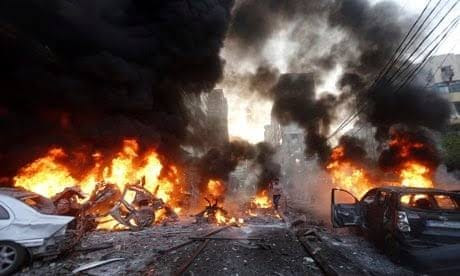 A devastating car explosion rocked the area near Delhi’s historic Red Fort on Monday evening, 10 November 2025, at approximately 6:52 pm, claiming at least eight lives and leaving twenty-four injured. The high-intensity blast occurred near Gate No. 1 of the Lal Quila (Red Fort) Metro Station in the Chandni Chowk area, triggering fires that engulfed multiple vehicles. Witnesses spoke of a shockwave that rattled buildings and a scene of chaos and grief.
A devastating car explosion rocked the area near Delhi’s historic Red Fort on Monday evening, 10 November 2025, at approximately 6:52 pm, claiming at least eight lives and leaving twenty-four injured. The high-intensity blast occurred near Gate No. 1 of the Lal Quila (Red Fort) Metro Station in the Chandni Chowk area, triggering fires that engulfed multiple vehicles. Witnesses spoke of a shockwave that rattled buildings and a scene of chaos and grief.
Casualties and impact
Fifteen casualties were rushed to LNJP Hospital; eight were declared dead on arrival, with several others in a serious condition. The explosion damaged roughly six cars, two e-rickshaws and an autorickshaw at minimum, with total damaged vehicles reported across a range given the chain of fires and secondary impacts.
What exactly exploded?
Delhi Police said a slow-moving vehicle halted at the traffic signal, then an explosion occurred within that car, mangling it and damaging nearby vehicles. Officials cautioned against premature labels: there was no visible crater and no classic splinter injuries immediately apparent, which sometimes accompany conventional IEDs. Forensic teams from NIA, NSG and FSL are examining residue to determine whether this was an IED, a fuel/CNG-related detonation, or a deliberately engineered device of a different configuration.
Has anyone claimed responsibility?
No credible claim has been made. This is important: while speculation is inevitable, conclusions must be evidence-led. The National Investigation Agency, Delhi Police Special Cell, the National Security Guard and the Forensic Science Laboratory are conducting a multi-agency probe. NSG’s National Bomb Data Centre is analysing samples to identify an explosives signature and match it, if possible, with known past incidents.
The Faridabad warning that should have triggered a ‘true red’ alert
Hours before the Red Fort blast, agencies busted a major explosives cache in Faridabad (Dhauj), linked to a suspected module with Jaish-aligned connections. Hundreds of kilograms of explosive precursors, components and timers were seized; multiple arrests followed, including professionals alleged to have aided the conspiracy. That seizure, in the National Capital Region itself, should have automatically elevated posture across Delhi to the highest alert tier: choke-points activated, randomised checks intensified, and iconic targets — like the Red Fort precinct — saturated with visible and covert security. Whether that alert cascade was fully executed is now a central question.
The insinuation about Bihar voting tomorrow — condemn the politicisation, pursue the truth
Some are insinuating that the timing is “too much of a coincidence” because Bihar votes tomorrow, Tuesday, 11 November 2025. This is precisely why any attempt to communalise or politicise a mass-casualty blast on the eve of polling must be condemned without qualification. Investigators should test every hypothesis with forensics, call-detail records and movement analyses — including the polling-timing angle — but in order to shut down motivated speculation with facts, not to fuel it.

A pattern of preventable lapses
This is not an isolated failure. Earlier, in Pahalgam, terrorists demonstrated the ability to strike deep inside — more than a hundred kilometres within the national heartland from the Line of Control/international border — underscoring enduring vulnerabilities in detection, interdiction and rapid response. And here in the NCR, even after a bomb factory-like setup came to light in Faridabad, the capital’s security architecture did not act with the urgency and uniformity the threat demanded. Whether due to complacency, coordination breakdowns or resource gaps, the lesson is the same: we cannot keep discovering plots after the fact and then hoping symbolism will protect what procedures did not.
Who did it — and who is responsible?
Two tracks must run in parallel:
The manhunt. A ruthless, intelligence-driven pursuit to identify the perpetrators, financiers, logisticians and online/offline enablers — across state lines if needed — with quick, court-worthy preservation of evidence.
Accountability at the top. Red Fort is not just any site; it carries the weight of sovereignty and the Republic. When a car explodes at its doorstep, responsibility travels up the chain of command. Delhi Police reports to the Union Ministry of Home Affairs (through the Lt. Governor). If alerting, access control, CCTV/ANPR coverage, perimeter hardening or quick-reaction protocols failed, accountability does not stop with a few suspended constables.
Resignations and sackings — a principled test
Operational leadership: If the inquiry finds lapses in perimeter hardening, traffic management, alert execution or inter-agency coordination, the relevant zonal/special commissioners must be relieved immediately.
Force-wide responsibility: If failures were systemic — ignored warnings, unimplemented SOPs, broken alert cascades — the Commissioner of Police should be prepared to step aside.
Ministerial responsibility: Because policing in Delhi is under the Centre, if actionable intelligence existed (especially post-Faridabad) and wasn’t operationalised, the political executive must own that failure — not with rhetoric, but with consequences commensurate with the findings of an independent, time-bound inquiry.
Concrete questions the public deserves answered within 24–72 hours
Alert cascade: After the Faridabad seizure, at what exact times were alerts issued by MHA/IB to Delhi Police, acknowledged by districts, and implemented on the ground?
Red Fort security posture: What specific access-control and vehicle-screening measures were active at/around Gate No. 1 between 6:00 pm and 7:00 pm?
CCTV/ANPR trail: Was the suspect vehicle visible on the network upstream of Red Fort? Were any anomaly flags raised and, if so, acted upon?
Forensic signature: What are the preliminary NSG/NBDC findings on explosives residue, initiators and power sources — and do they correlate with the Faridabad haul?
Inter-state nodes: What, if any, linkages tie the Red Fort incident to the module disrupted in Faridabad and to prior attempts in J&K?
Medical and emergency response: What was the timeline from blast to first medical contact, and how did triage distribution across hospitals perform relative to mass-casualty SOPs?
Security response so far
A high alert has been declared across Delhi and neighbouring states. Borders with Haryana and Uttar Pradesh have increased checks; Metro operations continue with selective gate restrictions; sensitive sites have enhanced patrols; and Mumbai, Uttar Pradesh and Rajasthan have all raised their alert posture. The Indo-Nepal border has heightened monitoring. These are appropriate first steps — but their timeliness and sufficiency relative to the Faridabad discovery must be scrutinised.
One explosion, not “twin blasts”
Despite social-media noise, the incident currently points to a single explosion in one vehicle near Gate No. 1 that triggered fires in adjacent vehicles. The imagery of multiple burning cars likely seeded the “twin blasts” misreport. This must be clarified repeatedly by officials to prevent misinformation spirals — especially when an iconic site is involved.
Where things stand tonight
As of late Monday, no arrests specific to the Red Fort blast have been announced. All angles remain open: an intentional IED, a triggered device with atypical fragmentation, a CNG/fuel event exploited as cover, or a hybrid method. The investigators’ job is to move beyond conjecture to testable, prosecutable facts — quickly.
The 72-hour plan that honours the victims with action, not theatre
Publish the alert timeline (Faridabad to Red Fort) with times, recipients and field acknowledgements.
Release preliminary forensics from NSG/NBDC sufficient to narrow cause and mode, without compromising the probe.
Name the accountable officers for Red Fort perimeter/traffic/CCTV operations during the relevant window; replace them pending enquiry.
Stand up a joint NCR tasking cell (Delhi Police Special Cell, Haryana, UP ATS, NIA, IB) with a single operations log and shared live feeds for thirty days.
Announce victim support: ex-gratia, long-term rehabilitation for the grievously injured, and a public helpline with verified updates.
Daily, on-record briefings to quash rumours, including on the Bihar-polling insinuation — test it with evidence, or explicitly rule it out.
Bottom line
Condemn the act without caveat. Reject election-eve insinuations from any quarter. Hunt down the perpetrators and their enablers. Fix responsibility from the top down — not just with prayers and promises, but with transparent timelines, published SOPs and sackings where due. The Red Fort is more than brick and ramparts; it is a living emblem of the Republic. Our response must match that weight — in competence, in candour, and in courage.